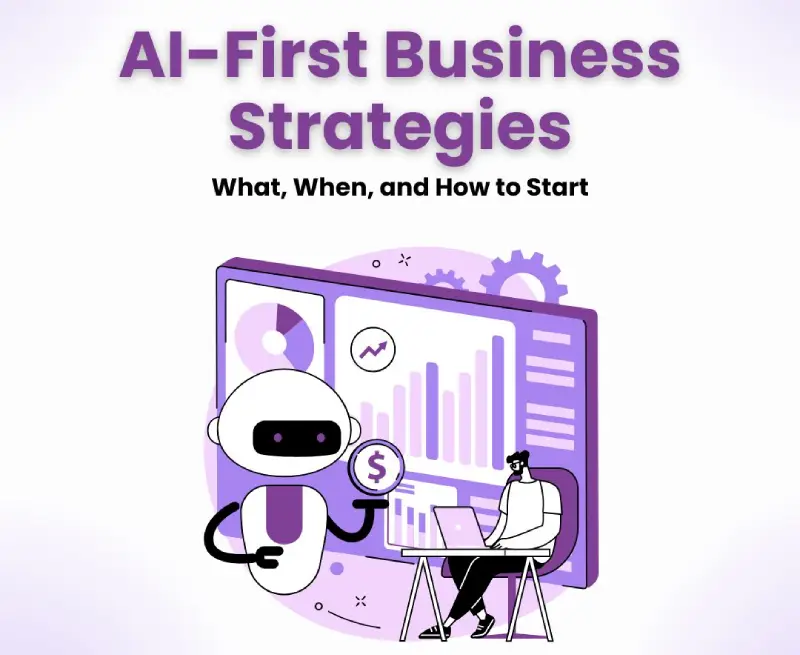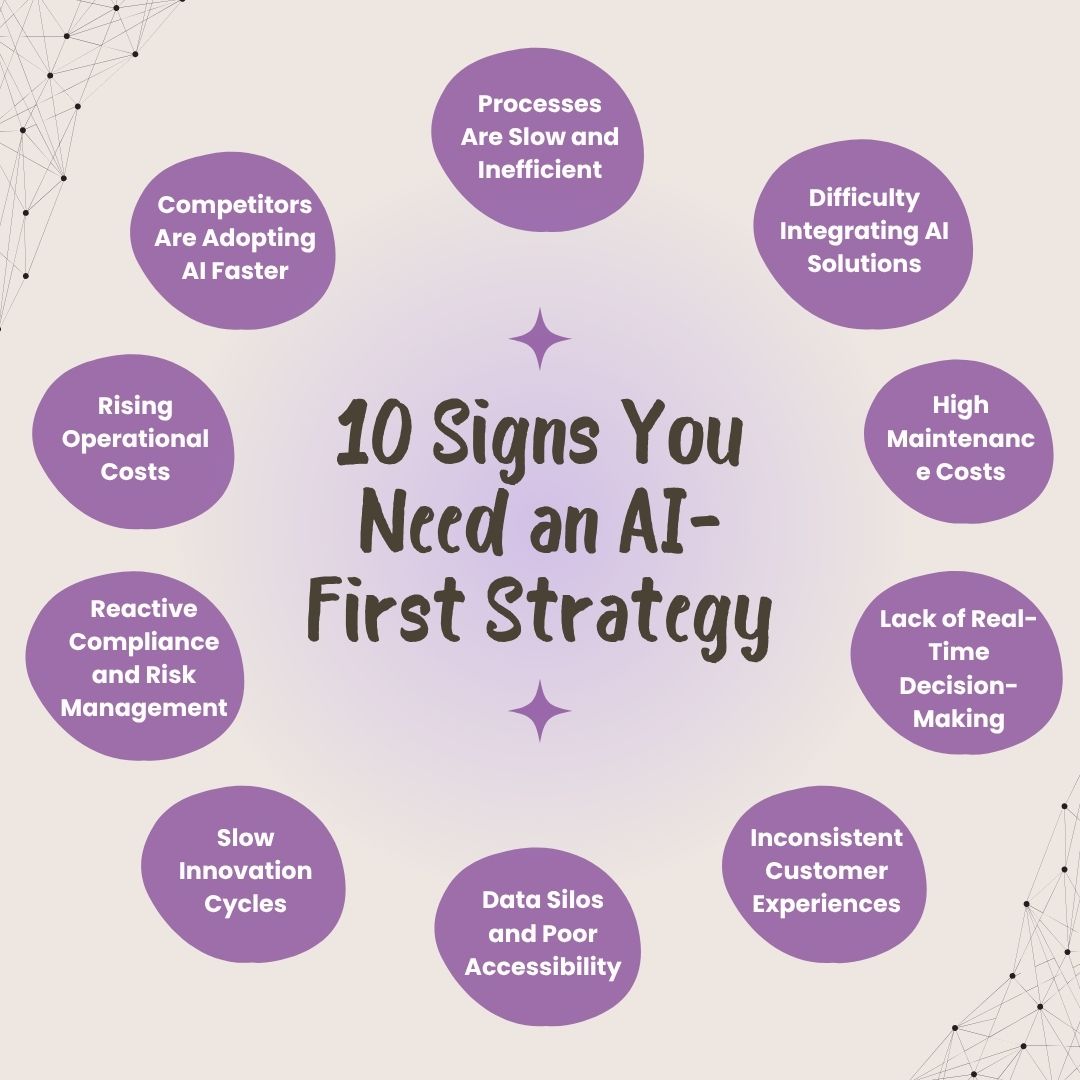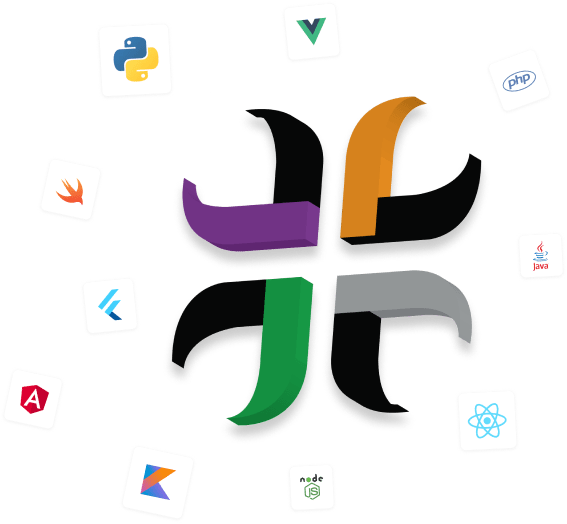
In today’s digital era, businesses face unprecedented pressure to innovate, streamline operations, and deliver highly personalized customer experiences. Legacy systems, while functional, often become bottlenecks that restrict growth and slow decision-making. The solution? Adopting an AI-first strategy, which prioritizes Artificial Intelligence (AI) at the core of every business function.
An AI-first approach is not just about automation—it’s about redefining business operations, decision-making processes, and customer engagement. Organizations that embrace AI-first strategies can uncover insights from vast data sets, predict market trends, optimize resources, and create competitive advantages that traditional systems cannot deliver.
This comprehensive guide explains why businesses need an AI-first approach, how to identify when to adopt it, and the steps to successfully implement AI across your organization.

Read More: Cost to Develop an App Like ChatGPT: Key Factors Explained
Why Adopt an AI-First Strategy Instead of Incremental Upgrades?
Many organizations attempt to modernize their IT infrastructure through incremental upgrades, adding new features to existing systems. While this approach can temporarily improve functionality, it often fails to meet the demands of AI integration. Traditional legacy systems are not AI-ready; they lack scalable data frameworks, machine learning capabilities, and flexible architectures required for modern intelligent applications.
An AI-first strategy offers several advantages:
- AI-Native Architecture: Platforms built with AI in mind allow seamless integration of machine learning, natural language processing, and predictive analytics.
- Scalable Data Infrastructure: Modern AI systems handle large volumes of structured and unstructured data efficiently, supporting real-time analytics.
- Operational Agility: AI-first systems adapt to evolving business requirements without requiring major overhauls.
- Innovation Enablement: Organizations can experiment with AI-driven products, services, and processes, fostering continuous innovation.
Example: Companies like Amazon and Netflix have embraced AI-first strategies to drive personalization, automate processes, and anticipate customer needs. These organizations illustrate that AI-first transformation is not a luxury but a necessity for modern enterprises.

10 Signs Your Business Needs an AI-First Strategy Now
Even if your current systems function, certain indicators reveal that your business is ready for AI adoption:
1. Processes Are Slow and Inefficient
Manual or semi-automated workflows limit scalability and responsiveness. AI-first systems optimize operations through automation, predictive analytics, and real-time monitoring, ensuring faster delivery and reduced downtime.
Example: Logistics companies leveraging AI-driven route optimization can cut delivery times, reduce fuel costs, and improve customer satisfaction.
2. Difficulty Integrating AI Solutions
Traditional systems are often rigid, making it challenging to integrate modern AI tools. AI-first architectures enable plug-and-play AI modules, ensuring smooth integration with minimal disruption.
3. High Maintenance Costs
Legacy systems require constant attention, draining financial and human resources. AI-driven platforms automate system monitoring, predict failures, and reduce ongoing maintenance needs.
4. Lack of Real-Time Decision-Making
Data delays hinder timely decision-making. AI-first systems provide real-time insights, enabling predictive and proactive business strategies.
Example: Banks using AI fraud detection can flag suspicious transactions instantly, preventing losses rather than reacting post-event.
5. Inconsistent Customer Experiences
AI-first systems deliver personalized, consistent customer experiences across channels, boosting engagement and retention.
6. Data Silos and Poor Accessibility
Legacy systems often store data in fragmented silos. AI-first solutions unify datasets, enabling comprehensive analytics, cross-department collaboration, and better strategic planning.
7. Slow Innovation Cycles
AI accelerates experimentation by simulating outcomes and automating routine processes. Companies can launch new products faster and adapt to market changes with agility.
Example: AI-driven healthcare companies use predictive modeling to simulate drug interactions, shortening R&D cycles.
8. Reactive Compliance and Risk Management
Traditional approaches monitor compliance after the fact. AI-first systems enable continuous risk assessment and regulatory adherence, minimizing penalties and ensuring proactive governance.
9. Rising Operational Costs
AI-first strategies optimize resource allocation, reduce manual errors, and streamline workflows, ultimately reducing operational expenses.
10. Competitors Are Adopting AI Faster
Businesses that delay AI adoption risk losing market share. AI-first organizations innovate rapidly, improve efficiency, and gain customer loyalty, creating a competitive edge.
You May Also Like: Custom Blockchain App Development Services: Build Secure & Up-to-Date Apps
What to Do When You See These Signs
Recognizing the need for AI is the first step. The next is implementing a structured strategy:
1. Define Clear AI Objectives
Identify what you want to achieve: efficiency, customer satisfaction, new revenue streams, or innovation. Align AI goals with broader business objectives to ensure measurable impact.
2. Assess Data Readiness
High-quality data is the foundation of AI. Evaluate your datasets for accuracy, completeness, and relevance. This may require data cleansing, migration, and normalization.
3. Build or Acquire AI Expertise
Develop in-house teams or collaborate with AI specialists. Key roles include data scientists, machine learning engineers, and AI solution architects.
4. Implement Pilot Projects
Start small with high-impact pilot projects to test AI integration, evaluate performance, and refine models before a full-scale rollout.
Example: Retailers might implement AI-powered demand forecasting for one product category before scaling it across all inventory.
5. Monitor and Iterate
AI systems improve over time. Continuous monitoring, performance analysis, and model updates ensure sustained effectiveness and accuracy.
6. Foster a Culture of Innovation
Encourage teams to embrace AI tools, experiment with new ideas, and adopt data-driven decision-making to drive enterprise-wide AI adoption.
Real-World Examples of AI-First Transformation
Amazon
Amazon uses AI across its operations—from predictive demand planning and inventory management to personalized recommendations. Its AI-first approach ensures operational efficiency, improved customer experiences, and significant revenue growth.
Netflix
Netflix relies heavily on AI for content recommendations, demand forecasting, and production planning. AI helps maintain high engagement levels, reduces churn, and guides content investment decisions.
Tesla
Tesla integrates AI in autonomous driving, energy management, and vehicle diagnostics. AI-first strategies allow Tesla to innovate faster than traditional automakers, shaping the future of transportation.
Challenges in Implementing an AI-First Strategy
While AI-first strategies offer tremendous benefits, organizations face several challenges:
- Employee Resistance: Fear of job loss or disruption may hinder adoption. Solution: Provide training, transparency, and highlight AI as an enabler.
- Data Privacy and Security: AI systems handle sensitive information. Solution: Implement robust data governance and comply with regulations like GDPR.
- Integration Complexity: Merging AI with existing systems can be technically challenging. Solution: Phased implementation and hybrid integration approaches help manage complexity.
- High Initial Costs: AI adoption requires investment in technology, talent, and training. Solution: Pilot projects and ROI-focused strategies mitigate financial risk.
Best Practices for AI-First Transformation
- Audit Current Systems: Identify gaps in infrastructure, processes, and data quality.
- Develop a Phased Roadmap: Plan AI adoption in stages with clear KPIs and milestones.
- Invest in Employee Training: Build AI literacy and encourage cross-functional collaboration.
- Select the Right Tools: Choose AI platforms that align with business needs and scalability requirements.
- Measure ROI: Track metrics such as operational efficiency, customer satisfaction, and cost savings.

Also Read: The Future of AI in Stock Trading: Opportunities, Risks, and Market Predictions
How AI-First Businesses Gain a Competitive Advantage
- Operational Efficiency: Automation reduces manual workloads and speeds up processes.
- Enhanced Customer Experiences: AI enables hyper-personalization, improving engagement and retention.
- Data-Driven Insights: Predictive analytics guide strategic decisions in real time.
- Scalability: AI-first systems adapt easily to business growth.
- Innovation Leadership: Continuous experimentation fosters new products, services, and business models.
Conclusion
Adopting an AI-first strategy is no longer optional—it’s a critical requirement for businesses seeking long-term growth, innovation, and competitive advantage. By recognizing signs of legacy system limitations, defining objectives, ensuring data readiness, and following a structured AI implementation roadmap, organizations can transform operations, enhance customer experiences, and innovate continuously.
The journey to becoming an AI-first enterprise requires careful planning, investment, and cultural change—but the payoff is substantial: smarter operations, faster decisions, and sustainable growth in a rapidly evolving digital landscape.
FAQs
-
What is an AI-first strategy?
An AI-first strategy integrates AI into every business function to improve efficiency, decision-making, and customer experiences.
-
How can I identify if my business needs AI-first transformation?
Signs include slow processes, rising operational costs, inconsistent customer experiences, data silos, and lagging competitors.
-
Where should I start implementing AI?
Begin with pilot projects, assess data readiness, define objectives, and build or acquire AI expertise.
-
What challenges may arise during AI adoption?
Common challenges include employee resistance, integration complexity, data privacy concerns, and upfront investment costs.
-
How does an AI-first strategy provide a competitive advantage?
AI-first strategies optimize operations, enhance customer experiences, enable faster decisions, and foster continuous innovation.

 Software Development
Software Development Food Delivery
Food Delivery Taxi Booking
Taxi Booking E-Commerce
E-Commerce Real Estate
Real Estate Healthcare
Healthcare



